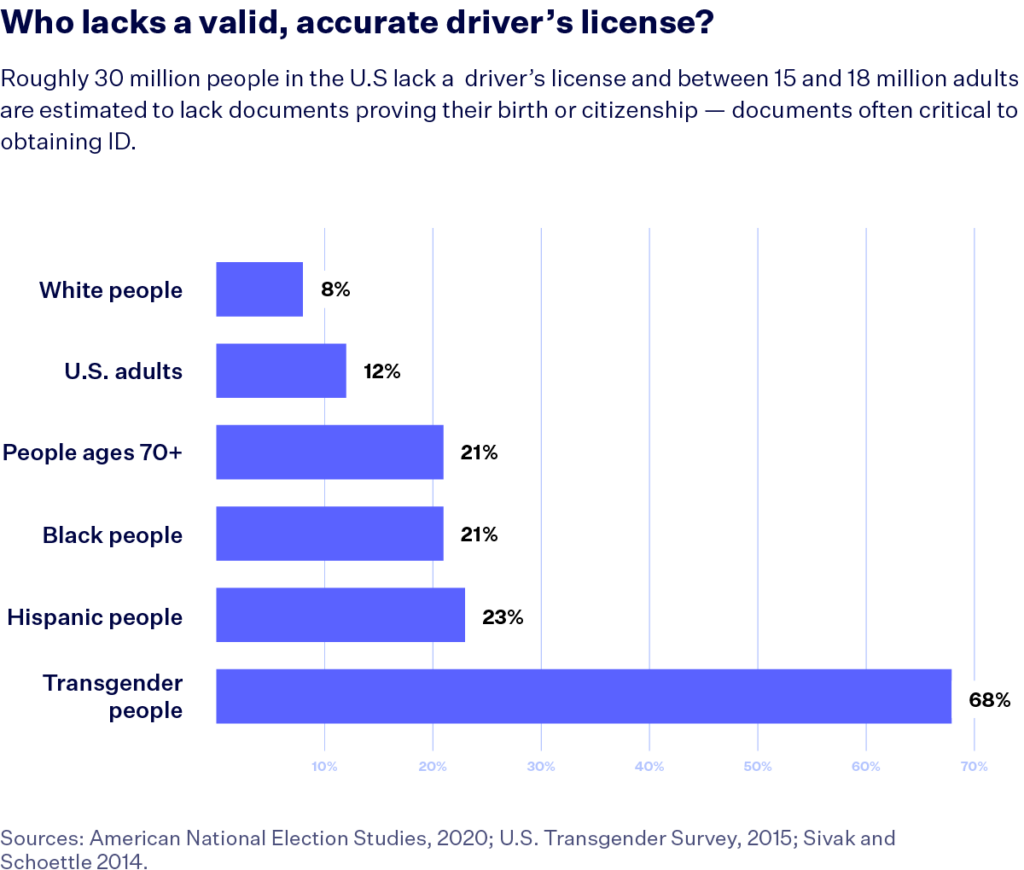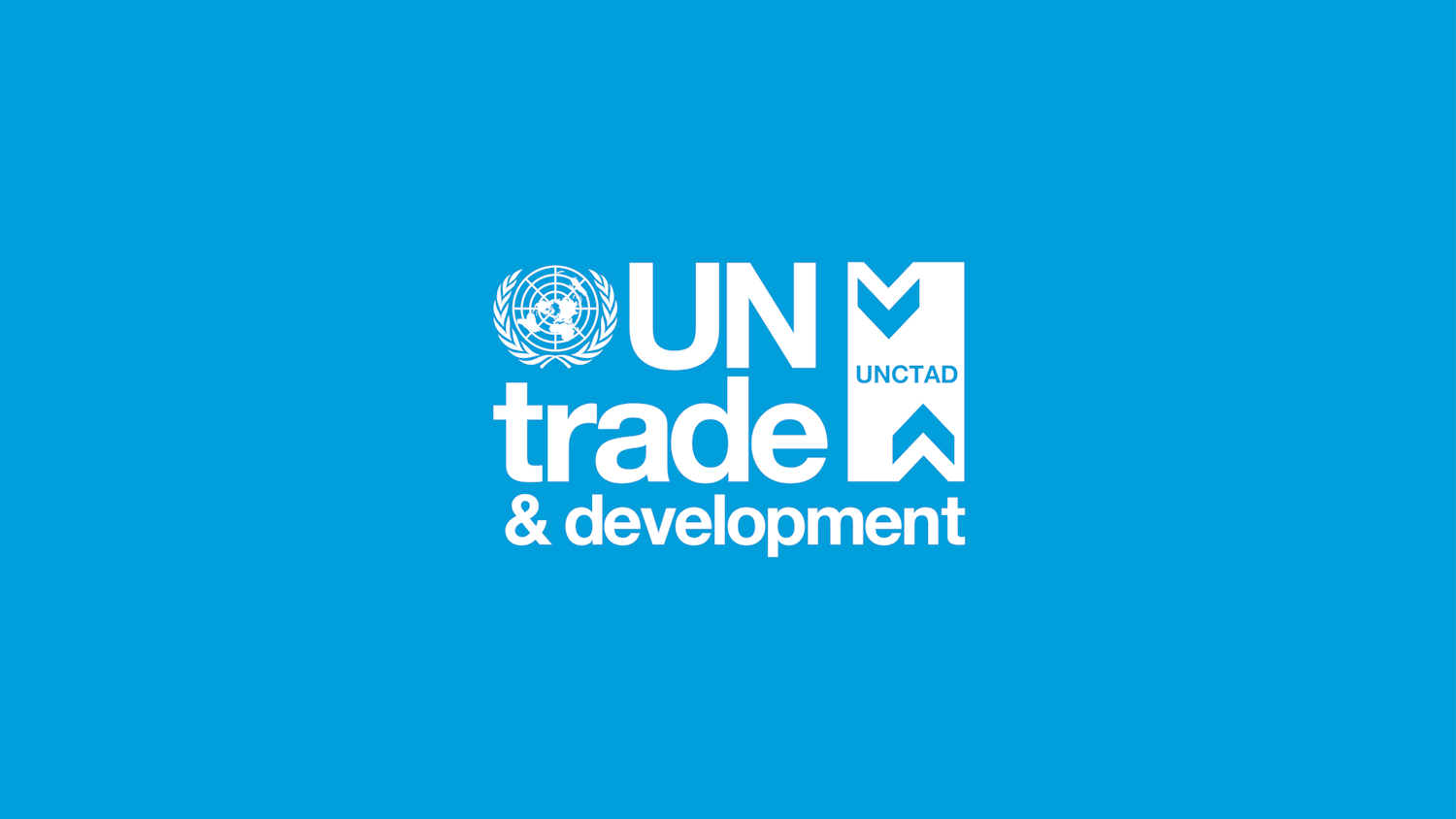Discover Pandipedia
Pandipedia is the world's first encyclopaedia of machine generated content approved by humans. You can contribute by simply searching and clicking/tapping on "Add To Pandipedia" in the answer you like. Learn More
Expand the world's knowledge as you search and help others. Go you!
The cricket rivalry between England and the West Indies is one of the most storied in the sport, dating back to the late 19th century. The first Test match between the two nations occurred in 1928, marking the beginning of a competitive relationship that has yielded numerous memorable contests. Initially, England dominated early encounters, achieving notable victories in the inaugural series by whitewashing the West Indies 3-0[1][6].
As the West Indies began to develop their cricketing capabilities, the dynamics started to shift. The team slowly emerged as a competitive force throughout the mid-20th century, culminating in memorable series and matches that shaped the narrative of their rivalry.
The Rise of West Indies Cricket

The 1970s and 1980s are often regarded as the golden era for West Indies cricket. Under the leadership of legendary players such as Clive Lloyd, Viv Richards, and Joel Garner, the West Indies established themselves as the premier team in the world. They not only dominated England but also the global cricketing landscape. Their fast bowling attack, often referred to as the 'fearsome foursome,' terrorized batsmen globally[2][4].
Key moments during this period include the 1976 Test series, where the West Indies won decisively, and the 1984 series, where they completed a clean sweep with a 5-0 victory over England[6][10]. This period solidified the West Indies' status as a cricketing powerhouse, with the team also winning two World Cups in 1975 and 1979.
Shifts in Power and Competitive Contests

Despite the West Indies' dominance, England worked hard to regain their competitive edge. The early 1990s were marked by England's resurgence, with the team winning various Test matches and series against the West Indies. This included a series in 1991 that saw closely contested matches, highlighting the competitive spirit between the two nations[6][9].
The rivalry continued to evolve into the new millennium, with both teams experiencing highs and lows. England's 2000 Test series victory against the West Indies marked a significant turning point, demonstrating that they could compete with the once-dominant West Indies[3][4].
Notably, the 2004 and 2007 Test series saw England achieve significant victories, further challenging the West Indies' historical supremacy, concluding with 4-0 wins in both series[10][11].
Recent Developments and Modern-Day Context
In more recent years, the competitive landscape has shifted again. England has embraced a more aggressive style of play, particularly in limited-overs formats, culminating in their victory in the 2019 Cricket World Cup, which prominently featured encounters against the West Indies during the tournament[2][8].
The revival of West Indies cricket in limited-overs cricket is evident with their successes in T20 competitions, where they have showcased their explosive batting capabilities. Famous players such as Chris Gayle and Kieron Pollard have redefined the limits of batting in T20 formats, making the West Indies a formidable opponent[3][6].
Cultural and Historical Significance

The rivalry between England and the West Indies extends beyond mere statistics and results; it reflects deep historical and cultural connections. The early matches symbolized the colonial relationship between England and its Caribbean territories. Over the years, cricket has served as a unifying sport within the Caribbean community, while also highlighting the struggles and triumphs faced by West Indian cricketers against the backdrop of racial and social issues[2][4].
This critical historical context gives depth to the continued rivalry, with each match representing not only a battle for supremacy on the cricket field but also a reflection of the social and political nuances between the two nations.
Conclusion
The England vs. West Indies cricket rivalry embodies a rich tapestry of sporting excellence, cultural significance, and memorable moments. As both teams continue to evolve, with England often leading in modern formats and West Indies demonstrating flashes of their historical prowess, the rivalry promises to remain a thrilling spectacle for cricket fans around the globe. Each encounter bears the weight of history while also shaping the future narrative of cricket, ensuring that this rivalry remains one of the most engaging in the sport's rich history[4][5].
Let's look at alternatives:
- Modify the query.
- Start a new thread.
- Remove sources (if manually added).
- Request a manual search from our human research team.

Voter ID laws have emerged as a contentious issue within the electoral landscape both in the United States and the United Kingdom, significantly affecting voter access and participation. While proponents argue that such measures enhance electoral integrity, numerous studies and reports suggest that they disproportionately disenfranchise vulnerable populations.
Barriers to Accessing Voter ID

The Movement Advancement Project elucidates considerable barriers to obtaining ID in the U.S. that transcend mere inconvenience. Factors such as the necessity for multiple forms of additional documentation, financial burdens, and service availability pose substantial obstacles to many individuals. About 15 to 18 million people in the U.S. lack access to essential documents that prove their birth or citizenship, crucial for acquiring identification[1]. The financial implications are dire, particularly for marginalized groups; for example, one-third of transgender individuals reported spending over $250 on name changes to match their gender identity, with many unable to afford these costs[1].
In the UK, the situation reflects similar concerns following the introduction of voter ID requirements. Data from the May 2023 local elections revealed that approximately 14,000 individuals were turned away for lacking the necessary photo ID, with the proportion higher among ethnic minorities and unemployed voters[6]. The Electoral Commission acknowledged that this figure likely underestimated the actual number of disenfranchised voters since many potential voters may have turned away upon learning about ID requirements[6].
Impact on Marginalized Communities

Voter ID laws exacerbate existing inequalities, disproportionately impacting communities of color and low-income individuals. The Brennan Center highlights a significant racial turnout gap following the implementation of strict voter ID laws in various states, with research indicating that these measures hinder Black and Latino voters more acutely than their white counterparts[3]. In North Carolina, studies revealed that the enactment of such laws reduced turnout even after the laws were repealed, indicating a lingering effect on voter behavior[3].
In the UK, similar concerns have been raised regarding young voters and those without stable economic standing. The Good Law Project criticized the Elections Act 2022, asserting that the list of acceptable IDs fails to represent younger citizens effectively, thus creating barriers specific to this demographic[5]. As youth tend to favor progressive candidates, disenfranchising them poses a political risk for the ruling government and raises moral questions about fairness in the electoral process[5].
Voter Turnout and Engagement
The evidence indicating the adverse effects of voter ID laws on turnout is compelling. A significant body of research correlates strict ID requirements with decreased voter participation rates among marginalized communities. In Texas, voters of color were found to be disproportionately barred from voting due to ID requirements, suggesting that these laws are not merely procedural but serve as structural barriers to engagement[3]. The broad consensus among studies indicates that while some argue voter ID laws have a minimal impact on overall turnout, they clearly hinder access for vulnerable groups, making participation in the electoral process more difficult for them[3].
In the UK, despite widespread support for voter ID laws—approximately two-thirds of Britons support them—there remains a palpable concern about the detrimental impacts on turnout, especially for groups already facing challenges in accessing the electoral process[2][6]. Awareness of the new rules is high; however, significant segments of the populace, particularly among younger demographics, remain uninformed about these requirements, thus further complicating their ability to vote[2].
Legal and Political Ramifications

The political ramifications of implementing voter ID laws are profound. Critics argue that they serve as tools for disenfranchisement rather than measures of integrity. For instance, in the U.S., Republicans have faced accusations of exploiting voter ID laws for electoral advantage, as evidenced by strict regulations that often target demographic groups less likely to possess the required IDs[1].
In the UK, the introduction of voter ID has faced legal challenges based on claims of unlawful disenfranchisement impacting individuals with disabilities and other marginalized populations[5]. The discourse surrounding these laws often centers on balancing electoral integrity with ensuring equitable access to voting rights, posing significant questions about democracy's inclusivity and fairness.
Conclusion
The implications of voter ID laws are profound and multifaceted, affecting how segments of the population engage with democracy. While designed with the intention of safeguarding electoral integrity, the resultant disenfranchisement reflects systemic inequities that undermine the very principles of democratic participation. Addressing these issues requires a re-evaluation of ID requirements and a concerted effort to make the electoral process more accessible for all citizens, regardless of socio-economic status or background.
Let's look at alternatives:
- Modify the query.
- Start a new thread.
- Remove sources (if manually added).
- Request a manual search from our human research team.
Get more accurate answers with Super Search, upload files, personalised discovery feed, save searches and contribute to the PandiPedia.

Maternity yoga pants offer numerous benefits, including comfort, support, and flexibility for an expectant mother's changing body. They typically feature stretchy fabrics with adjustable waistbands, allowing for ease during physical activity and day-to-day tasks. Moreover, many maternity yoga pants are designed with moisture-wicking properties to keep the body cool and prevent skin irritation[1][2][4].
However, there are some drawbacks. Tight-fitting yoga pants may restrict circulation and cause discomfort if they are not sized appropriately. Additionally, not all brands provide adequate support for the lower back, potentially leading to discomfort during pregnancy[2][5][6]. It is crucial to choose the right fabric and fit to avoid these issues.
Let's look at alternatives:
- Modify the query.
- Start a new thread.
- Remove sources (if manually added).
- Request a manual search from our human research team.

Meta has recently introduced a number of updates that enhance how users interact with its AI assistant across its platforms. For instance, you can now speak directly with Meta AI on Messenger, Facebook, WhatsApp, and Instagram DM—it will respond out loud in a natural, conversational style and lets you choose different voice options (including ones modeled on celebrities like Awkwafina, Dame Judi Dench, and John Cena)[2][4]. In addition, the assistant’s visual capabilities have been upgraded. Users can share photos with Meta AI and ask questions about them, request photo edits such as adding or removing objects or changing a background, and even generate entirely new images[2][4].
Meta has also enhanced its language support with a new translation tool for Reels. This feature automatically translates audio using real-time dubbing and lip-syncing so that content can be enjoyed across different languages[2][4]. Moreover, Meta AI now integrates more deeply into group interactions—you can invoke it in group chats by typing “@MetaAI” to get ideas, plan trips, or answer questions collaboratively[1][3].
For creators and businesses, there is also the launch of AI Studio, a platform that lets them build personalized AI experiences to better engage with their communities, along with newly personalized chat themes and improved AI-powered ad tools that have already shown to boost campaign performance[4].
Each of these upgrades is part of Meta’s ongoing effort to extend its AI capabilities across its ecosystem while offering more intuitive and useful interactions for both individual users and enterprises[2][4].
Let's look at alternatives:
- Modify the query.
- Start a new thread.
- Remove sources (if manually added).
- Request a manual search from our human research team.

International trade agreements are increasingly crucial in shaping global economic relations and facilitating trade between nations. As of October 2024, the landscape of trade agreements reflects ongoing negotiations, signings of new treaties, and the introduction of new policies that respond to changing geopolitical dynamics and economic needs.
Recent Developments in Trade Agreements

As an independent trading nation since exiting the European Union, the UK has successfully established over 70 trade agreements. Notably, the UK-EU Trade and Cooperation Agreement governs trade relations between the UK and EU member states. There are additional agreements that the UK has signed but not yet implemented, such as the economic partnership agreement with Comoros signed on April 12, 2022, which is soon expected to enter into force[1][2]. Furthermore, the UK is actively negotiating new agreements with several countries and regions, including India, Republic of Korea, Switzerland, Israel, and the Gulf Cooperation Council, with aspirations to enhance its trading partnerships[1].
In the broader context of international trade, the Global Trade Update from UNCTAD indicates that after a downturn in 2023, global trade is anticipated to rebound in 2024. This projection follows a year of contraction, where trade in goods declined significantly, while the services sector demonstrated resilience despite the overall downturn[2][5].
The Role of Geopolitical Factors
Geopolitical tensions continue to influence trade dynamics significantly. For instance, the trade interdependence between the U.S. and China has decreased, and countries are often reassessing their trade relationships amid rising protectionism and competition[4][9]. The WTO has highlighted that “global economic fragmentation” is becoming a pressing concern that could undermine potential growth opportunities in trade as countries reassess dependencies on certain trading partners[7][10].
Moreover, discussions about diversification in trade partnerships are rising. The EU and other nations like the UK are exploring new agreements to strengthen their economic ties in light of these changing geopolitical landscapes. For example, the EU has over 42 agreements with various countries, valued at over €2.3 trillion[6].
The Economic Impact of Trade Agreements
However, uncertainties remain regarding inflation and supply chain disruptions. Shipping costs are still impacted by geopolitical tensions—and environmental factors, such as changing water levels in crucial shipping routes, also pose significant risks to smooth trade operations[2][7].
Consultation and Future Directions

Trade frameworks are also evolving with attention to digital economies. Recent agreements emphasize reducing bureaucratic hurdles in the exchange of digital goods and services, which have become increasingly relevant in today's global economy. Initiatives like the EU-Singapore Digital Partnership are examples of how trade agreements are adjusting to encompass new areas of commerce[9].
Conclusion
International trade agreements are at a pivotal junction, with ongoing negotiations and adaptations to the changing global economic environment. As countries seek to navigate complexities posed by geopolitical tensions, economic recovery prospects hinge on the ability to foster collaboration while addressing the challenges of protectionism and economic fragmentation. With expectations of increased trade growth in 2024, the effectiveness of these agreements will significantly influence global economic recovery and resilience in the coming years.
Let's look at alternatives:
- Modify the query.
- Start a new thread.
- Remove sources (if manually added).
- Request a manual search from our human research team.

According to the article, Google[1] is offering virtual machine instances powered by Nvidia H100 GPUs[1] and has introduced the Cloud TPU v5e[1], the latest version of its Tensor Processing Unit AI accelerators[1]. The article also mentions that Google will be offering different virtual machine configurations ranging from one TPU chip to over 250 within a single slice[1]. Therefore, based on the information provided, it can be inferred that Google has multiple GPUs and TPUs available. However, the exact number of GPUs and TPUs that Google has is not explicitly mentioned in the article.
Let's look at alternatives:
- Modify the query.
- Start a new thread.
- Remove sources (if manually added).
- Request a manual search from our human research team.
Get more accurate answers with Super Search, upload files, personalised discovery feed, save searches and contribute to the PandiPedia.
Waterproof Hiking Jacket
The REI's sub-$100 Rainier jacket uses high-quality laminate waterproofing to keep you from getting soaked, with a weatherproof center zip and venting pit zips for improved airflow[11].
Lightweight Hiking Shoes
Salomon's low-top, non-Gore-Tex mesh trail shoes dry quickly and provide comfort and warmth in moderate temperatures, ideal for casual hikers[11].
Durable Hiking Boots
Renegade boots are known for their durability and comfort, although they are a bit heavy; they provide necessary traction and support for challenging terrains[11].
Merino Wool Socks
Smartwool is the industry leader in merino wool, offering socks that are soft, odor-resistant, and comfortable, making them great for hiking and other outdoor activities[9].
Insulated Down Jacket
The Patagonia Down Sweater offers excellent warmth and is made from recycled materials, making it a popular choice for outdoor enthusiasts[7].
Versatile Hiking Pants
Prana's Stretch Zion Pant is noted for its comfort and performance, ideal for both hiking and casual wear, available in various colors and sizes[7].
Compact Camping Stove
The Weber Portable Gas Grill is great for outdoor cooking, equipped to handle diverse meals while camping[8].
Quality Sleeping Bag
The Sea To Summit Ascent Down Sleeping Bag offers exceptional insulation and temperature regulation, suitable for three-season use[8].
Comfortable Camping Chair
The ALPS Mountaineering Getaway Chair is easy to set up and designed for a variety of outdoor activities, offering stability and comfort[8].
Smart Backpack
The Gregory Women's Swift 22 H2O Backpack features multiple adjustment points and excellent padding, making it optimal for day hikes while providing functionality for everyday use[8].
Versatile Tent
The Marmot Limestone 6-person Tent provides ample room for camping with friends or family while remaining lightweight for transport[8].
Durable Cooler
The YETI Roadie 60 Wheeled Cooler is rugged, designed to keep contents cold for extended periods, and easy to transport over various terrains[8].
Comfortable Hiking Shirt
Columbia's Bugaboo jacket is a budget-friendly option featuring waterproof protection and breathable fabric, ideal for day hikes[6].
Thru-Hiking Pants
Rab's Neutrino Pro pants are made from technical materials, offering excellent warmth and durability for high-altitude explorations[7].
Lightweight Hammock
The Eno DoubleNest Hammock is portable and easy to set up, providing a comfortable place to relax during outdoor trips[11].
Collapsible Water Filter
The Sawyer Squeeze water filter is lightweight and effective at removing contaminants, perfect for ensuring clean drinking water while hiking[11].
:max_bytes(150000):strip_icc()/OSAGE-RIVER-9a649f9e64e04085b2d845f145866db9.jpg)
Folding Camping Cot
The Osage River Standard Folding Camping Cot elevates the sleeping experience off the ground, making it comfortable and easy to set up[8].
Emergency Bivvy
An emergency bivvy weighing less than 4 ounces can keep you dry and warm if you spend a night outdoors unexpectedly[11].
Lightweight Tent
The Nemo Dagger Osmo 3 Person Tent is designed for easy setup and exceptional performance in various weather conditions, making it versatile for backpacking[8].
First Aid Kit
A compact, well-stocked first aid kit is essential for safe outdoor adventures, providing peace of mind in case of emergencies[11].
Trekking Poles
Durable trekking poles help reduce the impact on knees while providing stability on rocky trails, essential for serious hikers[11].
Navigation Tools
A reliable handheld GPS can provide accurate navigation in remote areas, critical for adventurers seeking to explore off the beaten path[10].
:max_bytes(150000):strip_icc()/nCamp-Cafe-Portable-Coffee-Maker-9e0e4429b6b542ec8ae5dfc32577f479.jpg)
Portable Coffee Maker
The nCamp Café Portable Coffee Maker makes brewing coffee in the outdoors easy and efficient, enhancing the camping experience[8].
Practical Camp Pillow
The Exped Deep Sleep Pillow offers ergonomic support for a comfortable night’s rest while camping[8].
Lightweight Camping Lantern
The Ultimate Survival Technologies Duro Lantern offers adjustable brightness settings for versatile lighting options during camping trips[8].
Performance Base Layer
The Classic Thermal baselayer by Smartwool is designed for warmth, moisture-wicking, and comfort, ideal for active outdoor pursuits[9].
Let's look at alternatives:
- Modify the query.
- Start a new thread.
- Remove sources (if manually added).
- Request a manual search from our human research team.

Apple iPhone 16 Pro Max
Flagship smartphone with advanced AI photography and performance enhancements[5].

Samsung Galaxy S25 Ultra
High-end smartphone featuring AI-driven imaging and optimized user experience[5].

Google Pixel 9 Pro
Smartphone with real-time AI photography enhancements and seamless Google Assistant[5].
Xiaomi 14 Ultra
Affordable smartphone offering AI-enhanced camera modes and smart battery performance[5].
Asus Zenfone 12 Ultra
Smartphone with a 6.78-inch LTPO display and AI tools for noise removal and search[5].


Meta Quest 3
VR headset incorporating AI environment mapping and hand tracking for mixed reality[1].
Samsung Bespoke AI Laundry Combo
Washer-dryer that auto-adjusts cycles using real-time sensor data and AI[1].

LeafyPod AI-Powered Planter
Planter automating watering and monitoring environment with integrated sensors and AI[2].
Nvidia Project DIGITS
Compact personal AI supercomputer delivering up to 1 petaflop performance[2][4].
Omi AI Companion Wearable
Orb-shaped wearable that transcribes conversations and offers real-time summaries[2].

Roborock Saros Z70
Smart robot vacuum with a five-axis arm to clear obstacles for seamless cleaning[2][4].
Beatbot AquaSense 2 Ultra
Robotic pool cleaner with 27 sensors and a five-motor system for deep cleaning[2].
Withings’ Omnia Smart Mirror
Smart mirror that uses AI to scan your body and provide real-time health insights[2].
Mudra Link Gesture Wristband
Wristband detecting hand signals to control smartphones, computers, and AR/VR devices[2].
Natura Humana’s HumanPods
Wireless earbuds with AI-enhanced calls, music, and translation functionalities[2].
Halliday’s AI Glasses
Smart glasses featuring an invisible display for real-time notifications and translations[2].
Plaud AI Voice Recorder
Voice recorder with GPT-4o powered transcription and summary functions in 112 languages[3].
Unihand AI Hand Warmers
Compact 2-in-1 hand warmers delivering 360° warmth through intelligent temperature control[3].
Eilik – Cute Robot Pets Toys
Interactive robotic pet offering fun mini-games and expressive animations for entertainment[3].
Kosernt AI-Language Translation Earbuds
Earbuds providing real-time multilingual translation and quality call performance using AI[3].
POWERUP 4.0 Paper Airplane Kit
Smart paper airplane kit controllable via smartphone with AI-enhanced autopilot and stabilization[3].
Jiangler Auto Face Tracking Tripod
Tripod with AI-powered 360° face tracking for seamless video recording and live streaming[3].
Limitless Pendant Wearable AI Device
Fashionable pendant that provides real-time navigation, notifications, and personalized recommendations[6].
Looi Desktop Robot
Compact desktop robot managing tasks, schedules, and voice commands with adaptive AI[6].
Let's look at alternatives:
- Modify the query.
- Start a new thread.
- Remove sources (if manually added).
- Request a manual search from our human research team.
Overview

Recent studies have indicated that even when a complete algorithm is provided in the prompt, reasoning models fail to execute it accurately. This phenomenon highlights a deeper issue: these models have substantial limitations in both verifying the correctness of each step and following logical sequences as prescribed. The models’ inability to benefit from explicit algorithmic guidance exposes critical weaknesses in their reasoning capabilities. The text from the source explains that despite being given a recursive algorithm for the Tower of Hanoi, the model’s performance does not improve, and the failure point remains unchanged[1].
Inadequate Execution of Prescribed Algorithms
A key observation made in the study is that providing the exact solution algorithm does not lead to improved performance. For instance, in the Tower of Hanoi experiments, even when the recursive method was explicitly provided in the prompt, the failure in executing the solution occurred at nearly the same point as when the algorithm was not given. The source text states: "even when we provide the algorithm in the prompt—so that the model only needs to execute the prescribed steps—performance does not improve, and the observed collapse still occurs at roughly the same point." This clearly indicates that these models face difficulties with consistent logical step execution, regardless of whether they must discover the algorithm independently or merely follow provided instructions[1].
Limitations in Verification and Consistency

The inability to effectively follow and verify algorithmic steps is central to the failure of reasoning models when explicit algorithms are provided. The source material emphasizes that "finding and devising a solution should require substantially more computation (e.g., for search and verification) than merely executing a given algorithm." This suggests that the models are not only challenged by the process of devising novel solutions but also by the execution of known and provided methods. The internal process of verifying the correctness of every step appears to be insufficient. Due to these verification limitations, the models tend to collapse in performance as soon as the complexity increases, leading to an early error in the sequence of operations. This inconsistency in reasoning and verification means that even the simplest hints in the form of explicit algorithms do not translate into better performance during problem solving[1].
Underlying Computational and Logical Barriers
The experiments described in the text reveal that the reasoning models have inherent computational and logical scaling limits. As the complexity of the tasks increases, the models initially invest more tokens to reason through the problem; however, near a critical complexity threshold, their reasoning effort decreases despite the problems becoming harder. This counterintuitive behavior underscores a primary limitation: a shortfall in the capacity to dynamically adjust their verification routines as problem complexity increases. Even with the algorithm provided, the expected benefit of reduced search space and simpler execution conditions is not realized because these models still fail to properly track state transitions and maintain logical consistency across multiple steps. In essence, the failure is not solely due to the inability to find a solution, but also due to an intrinsic mismanagement of the execution process when following a set of explicit directives[1].
Implications for Future Research
The failure of reasoning models to harness the benefits of a provided algorithm calls for further investigation into their symbolic manipulation and logical verification capabilities. The observed limitations suggest that current training methods, although effective in generating chain-of-thoughts, are insufficient for developing robust, algorithmic reasoning skills that are crucial for precise and error-free problem solving. This shortfall indicates that future models may need enhanced mechanisms for exact computation and improved frameworks that focus on consistency in step-by-step logical execution. Researchers are thereby encouraged to explore hybrid approaches that combine both pattern recognition and strict algorithmic verification to overcome these fundamental barriers[1].
Conclusion
In summary, reasoning models fail to benefit from explicitly provided algorithms due to their inherent limitations in step verification and logical consistency. Despite improved chain-of-thought mechanisms, the failure to translate an algorithm into a reliable sequence of actions highlights a major challenge in artificial intelligence research. The verification process remains inadequate, and models exhibit similar performance collapse regardless of whether the algorithm is self-generated or supplied. This points to a need for future work focused on enhancing the symbolic and verification capabilities of reasoning models to ensure that explicit guidance can be effectively executed in practice[1].
Let's look at alternatives:
- Modify the query.
- Start a new thread.
- Remove sources (if manually added).
- Request a manual search from our human research team.

An atom is the smallest unit of matter that retains the properties of a chemical element. It consists of a central nucleus made up of protons, which carry a positive charge, and neutrons, which are neutral. Electrons, which have a negative charge, orbit the nucleus in designated energy levels called electron shells. Most of the mass of the atom is concentrated in the nucleus, while the electrons orbit far away, making the atom predominantly empty space[1][4][5].
The atomic number, which is the number of protons in the nucleus, determines the element's identity. In a stable, neutral atom, the number of protons equals the number of electrons, resulting in no net charge[2][6].
Let's look at alternatives:
- Modify the query.
- Start a new thread.
- Remove sources (if manually added).
- Request a manual search from our human research team.




































































































